We independently evaluate all recommended products and services. Any products or services put forward appear in no particular order. If you click on links we provide, we may receive compensation.
The Agile is a recent addition to the Kershaw lineup, designed by Rick Hinderer. It’s based off of his MP-1 model, itself an acronym for “Modular Platform 1.” Like the MP-1, the Agile’s party trick is it’s modular backspacer design, providing multitool functionality to the user with very minimal effort required to change components – something we’ll cover more in depth in the “Features, Fit & Finish” portion of this review.

Let’s take a closer look at the Agile and see how it holds up as an interpretation of Hinderer’s unique design concept as well as how it fills the role of an affordable EDC knife.
Key Specs: Kershaw Agile
The Blade
The Blade is arguably the Agile’s strong suit, but not necessarily because of its steel – see “field test” for more on this. The blade has is a wonderfully practical shape for day to day use – a Sheepsfoot profile with a flat grind, and a nicely balanced tip relative to the centerline of the blade thanks to a recurve on the spine. Speaking of the spine, a hollow ground swedge leaves the blade thin enough behind the tip to do a decent job at piercing hard plastic or thick cardboard.

Blade steel is 8Cr13MoV, which is to be expected at this price point. It’s nothing particularly special, but it does take a nice edge. In comparison to some similar steels, 8Cr offers less carbon (primary contributor to edge retention and hardness) than CTS-BD1 or VG-10, along with less chromium (hardness, corrosion resistance), molybdenum, but similar vanadium. It’s primarily chosen for cost and regional availability, but it does an OK job as a blade steel.
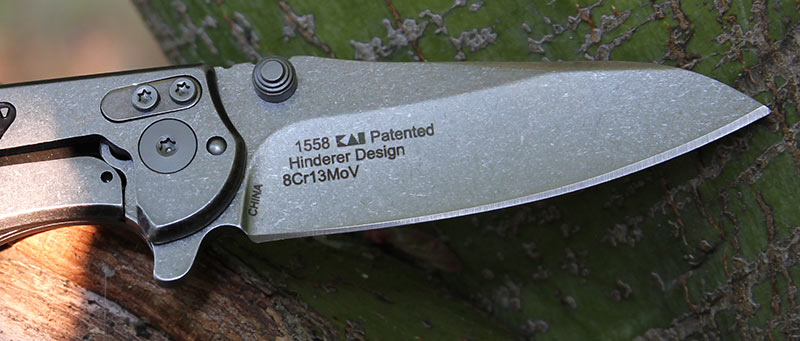
The Agile has a stonewash finish on the blade, unusual at this price point, which has less friction when cutting and also helps ward off corrosion in addition to looking nice. There’s a sharpening choil right behind the termination of the plunge grind with only a very slight “beard” at the end to complicate sharpening. Dual thumb studs are press-fit into the blade with a rounded step design, inexplicably slightly longer on the lock side than the show side. A short run of jimping runs up to the thumb stud on the spine.
Deployment and Lockup
The Agile uses Kershaw’s SpeedSafe assisted opening mechanism. If you’re unfamiliar, it’s basically a way to create a knife that functions like an automatic but legally isn’t considered one. It’s got a flipper tab and a thumb studs for deployment. A torsion spring is hidden on the show side between the handle and the liner that fits into the tang of the blade on one side and is anchored to the scale on the other. Basically, you open the knife the first ten percent and then the spring takes over for the rest of it. Once you get the blade past the detent ball the spring propels the blade into the locked position with a loud “snap.”

As far as implementation of assisted opening – well, Kershaw did it first, and in my opinion Kershaw does it best. That’s not to say there isn’t variance between SpeedSafe models. The Cryo has never flipped particularly well in my experience, needing a stronger spring or smooth washers or both. The ZT 0300 just has too heavy of a blade to make SpeedSafe seem especially impressive. But the Agile is good – not quite Leek good, which flips open like an actual switch blade, but good. The rate of mis-fires is low enough to not matter, it engages the lock solidly every time, and the detent isn’t overly stiff. It works.
That being said, I’m not in love with assisted openers for a number of reasons, and they’re starting to feel a little tired. Primarily, closing them is more work than the benefit opening them provides. Since it uses a torsion spring to open, you have to overcome that spring when you close them – which with practice can be done with one hand, but to do safely really requires two.
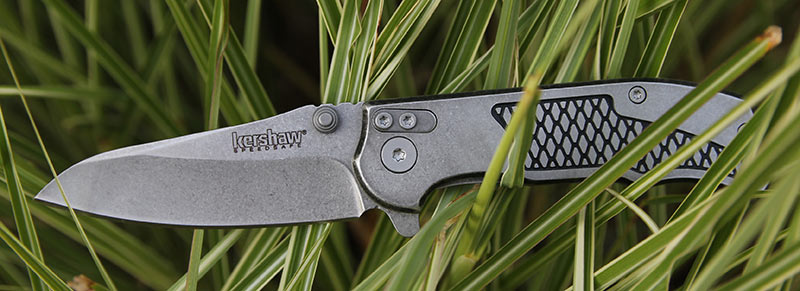
In comparison to things like Benchmade’s Axis Lock or Spyderco’s Compression Lock, which require opening the lock with one finger and swinging the blade shut, the process of releasing the lock bar with your thumb while you press on the spine with your forefinger, moving your thumb out and around the blade to the spine near the tip, and pressing the blade down while you cradle the handle in your palm seems like – well, it seems like extra work. And these extra steps are required every time you close the blade so that it opens a little faster – but for sure not faster than a ball bearing flipper or even any smoother than a well-tuned washer knife. I’d just as soon go without the assisted opening. Thankfully Kershaw gives you this option, since you can disassemble the knife and remove the torsion spring, then reassemble – it still has a detent ball to hold the blade shut.
Lockup is great. The Agile uses a stainless steel framelock so it doesn’t suffer from any of the potential complications that a titanium framelock would. Engagement is around 60-70% of the lockbar depending on how hard you flip the knife, with no vertical or horizontal blade play out of the box. Carrying the knife for a few weeks I noticed a touch of horizontal blade play – after closer inspection it turns out this was a result of the pivot screw backing off about a quarter of a turn. Reassembling the pivot with a dab of blue Loctite solved this issue. Lockbar tension is well judged, sometimes an issue with CRKT’s products but well dialed-in here. Kershaw proves here that they know how to make a cheap knife work right.
Features, Fit & Finish
Features are the Agile’s calling card. For a knife that retails for $30 this thing has a lot of goodies. The primary part trick here is the trio of backspacers that come with the knife. Like the MP-1, the Agile is designed such that you can swap backspacers out without disassembling the knife, by only removing a single screw, with a tiny spanner that’s included with the knife. How does it work? Basically, the backspacers have angled slots cut into them that allow them to slide onto the standoffs from the rear of the handle. The screw passes through a hole in the backspacer in front of the rear standoff and threads into the bottom of the backspacer, pressing the screw forward of and into the standoff to secure it in place. It’s remarkably simple but it works, all three different modular backspacers mounting securely and not moving at all once the screw is tightened.
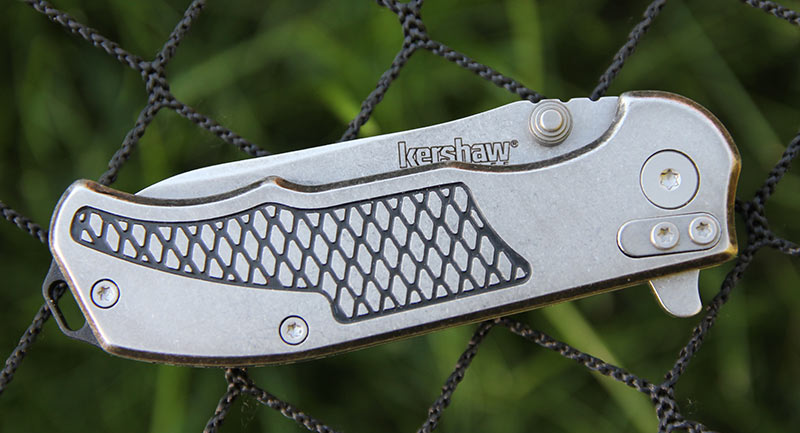
You have a choice of three backspacers: the Agile comes from the factory with the lanyard hole version installed, and there is also the choice of a straight screwdriver (that includes a tiny lanyard hole) or a cap lifter/bottle opener. They’re made out of metal and seem fairly solid. While it is somewhat gimmicky, it works and they are remarkably easy to swap out depending on what you’re doing that day.
Other features are less headline-grabbing but still noteworthy. Just like the real deal, the Agile has a recessed pocket clip mounting point (set up for tip up left hand carry, or tip down right and left hand carry, so it also has flush “filler tabs” in the spots not being occupied by the clip with screws protruding out. The clip itself is decent, a spoon style clip that is relatively long compared to the handle. There is a “diamond plate” pattern machined into the handles on both sides for added grip, which is filled in with black paint for a visual contrast. Speaking of which, it’s subtle enough that you might miss it, but the handle itself has a two-tone finish: the flat portions are stonewashed, while the chamfered edges and lockbar relief are blackwashed, giving the knife a “distressed” finish like an old pair of jeans.
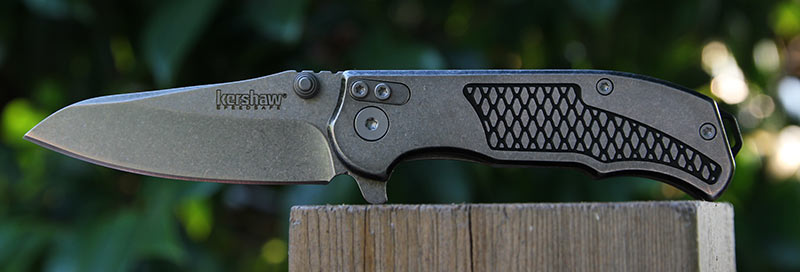
Another unique element of the Agile that’s derived from the MP-1 is the floating stop pin. If you look at the lock side ahead of the pivot you’ll see what looks like a ball bearing in the handle – it’s actually the end of the internal stop pin. A normal stop pin sits outside of the blade and butts against the tang when the knife is open; a floating stop pin is set into an arc-shaped track in the tang and the blade slides around it when it opens. While this is weaker by design than an external stop pin, it’s usually smoother when opening as well, and it frees up space for other components – like the SpeedSafe mechanism and the flipper tab. This is something of a controversial design choice but in my experience it makes knives smoother – like the excellent full-sized Kershaw Junkyard Dog from years ago.
Other than the aforementioned filler tab screws, all the hardware on the Agile is flush, a nice touch on a $30 knife. They’re all standard Torx fittings as well so there’s nothing complicated required for disassembly or adjustment. The Agile features a Hinderer-designed lockbar overtravel stop that is screwed to the frame as well.
Fit and finish is decent, with a few minor exceptions. One is a strange divot in the blade, just in front of the flipper tab in the choil on the show side; which is not evident in press photos or other photos of the Agile. It doesn’t seem to have any effect on performance, of course. Both filler tabs stand slightly proud of the handle scales, moreso the one on the lock side. At first glance, blade centering looks off but it’s not: the handle scales are considerably thicker on the show side to accommodate the SpeedSafe mechanism, which throws your eyes off. It seems well put together for the price point, with most of the fit and finish concerns related to aesthetics rather than functionality.
Field Test
The Agile is a great blade with mediocre steel. That’s par for the course from Kershaw, and I hope in the future they expand use of steels like 14C28N or CTS-BD1 in their products, because 8Cr13MoV isn’t great. It does take a razor sharp edge with ease, requiring only a few minutes on a Sharpmaker to tune up the factory edge, but I had the opportunity to really put the Agile’s blade through its paces with a job-related move, and a day’s worth of breaking down cardboard boxes and other various moving tasks left the blade so dull it couldn’t cut open an envelope rather than tearing it. It was easy to bring back to a shaving-sharp edge but a steel upgrade would make this a more appealing knife for EDC use. Corrosion is sometimes an issue with 8Cr13MoV but I had no issues – I’m pretty attentive about cleaning my knives off, and the stonewash finish also helps.

The blade itself is great aside from edge retention, though. The Sheepsfoot shape is probably one of the best (along with the drop point) for EDC tasks like cutting up boxes and opening bags, etc. the downward cant of the blade and the continuous curve of the belly combine to make a blade that does a little bit of everything well: slicing tape, cutting food, scraping, cutting rope, it does it all. The size is a little smaller than what I normally go for, but a smaller blade with a longer handle means better control over the task at hand.
Ergonomics, like most of Hinderer’s products, are solid. There’s no forward finger choil, but there isn’t really the real estate available for it here. The handle has an organic feel to it, with three separate grooves on the underside for your fingers and a gradual arc to the spine that fits comfortably in your palm. The chamfered edges are a nice touch, making the Agile feel polished and three-dimensional in hand. The flipper tab makes an effective finger guard, and a four finger grip is possible even with my large hands. The jimping on the spine is well placed when you’re bearing down on it and stabilizing the blade with your thumb. Flipper ergonomics are unremarkable which these days is a good thing; it doesn’t jab your phone in your pocket or tear your thumb up, relying on angle rather than jimping for grip, and thankfully they’ve skipped jimping on the spine where your thumb lands.
How successful are the modular backspacers from a usage standpoint? A mixed bag. The one that comes equipped – the lanyard hole – holds little use for me as I’m not a lanyard kind of guy, but it does comfortably extend the footprint of the Agile in your hand. The screwdriver backspacer is the most useful in day to day activities (I particularly like it for loosening the quarter-turn screws that secure the latches on my home HVAC filter vents, no need to go grab a screwdriver) but the actual face of the screwdriver is a little thinner than it needs to be. The bottle opener got a good bit of mileage in my care as a craft beer junkie, and it does a good job of decapping an IPA. It’s got plenty of leverage, unlike my other “oh, it’s right here” bottle opener: the Gerber Shard that resides on my keys. It’s a bit awkward to position the blade above the cap but with practice you get used to it.
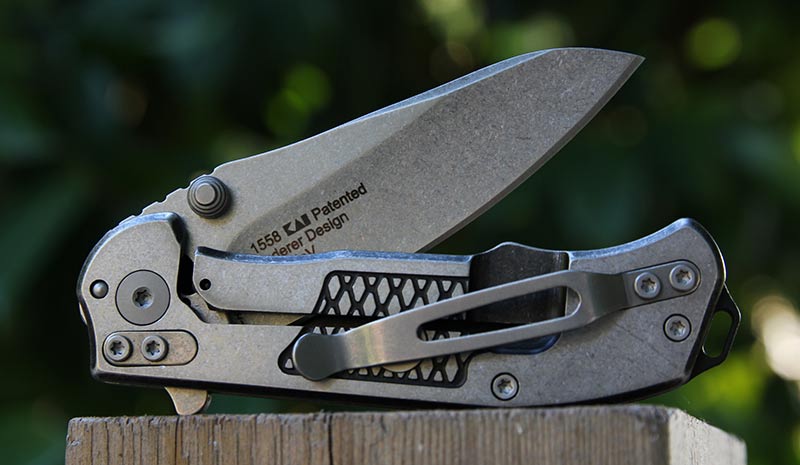
Both the screwdriver and the bottle opener suffer from the same problem, though: they present a significant hotspot to the palm of your hand when they’re installed, the pointy screwdriver more noticeably so. The bottle opener rises up from the profile of the handle and makes the Agile feel bigger in the pocket, and your hand tends to rub against it accidentally when reaching into your pocket for a cell phone, etc.
Speaking of carrying, the Agile has a great clip – well, it does what it can. The Agile is a dense knife. When closed it only measures 3.50” long but it weighs four ounces, so it tries to move around when you walk. The ratio of clip to handle is good, and the angle directs most of the mass towards the seam of the pocket.
Alternatives
All these knives available at BladeHQ.
At around $30 retail, the Agile is cheap enough that the chances of buyer’s remorse are low. Not quite “throw it away when it gets dull” cheap like a Sanrenmu or a Mora, but still. For your hard earned bucks there are some other choices.The Kershaw Cryo has been an immensely popular knife for a while now. I’m not the biggest fan but it’s been successful for a reason – it’s a practical, tough, well made knife. Materials and dimensions are similar enough to the Agile to not matter – a 2.75” 8Cr blade, stainless framelock build, SpeedSafe assisted opening action. It has the added benefit of a deep carry clip, offset by a rust-prone bead blasted finish on the blade. It even costs the same. For my money I’ll take the Agile over the Cryo 7 days a week and twice on Sundays. If you like the recipe, you’ll also like the stainless version of the RJ Martin-designed Zing. It’s got a 3” drop point blade with a high hollow grind, a nice pointy tip, and assisted opening via a flipper tab paired with a stainless framelock. Bead blasted 8Cr steel and a $30 price tag sounds pretty familiar.

If you move outside of Kershaw, the Esee Zancudo is hard to beat. It’s available in two versions: the standard variant uses AUS-8 stainless steel and runs about $30, or there’s a new version with D2 tool steel – which has much improved edge retention but isn’t stainless – for $35. Both have a 2.94” drop point blade with a full flat grind, manual thumb stud opening with a well-tuned action, and a textured polymer handle scale on one side with a stainless frame lock on the other. They’re utilitarian but not clunky, and they represent an immense value. The Ontario RAT 2 is similar as well, with a polymer handle, a stainless liner lock, and an AUS-8 blade.

For another $10 you can pick up the FRN-handled Steel Will Cutjack Mini Flipper, a knife which has been making waves in the community lately. It doesn’t have the M390 steel or ball bearing washers of its high-end sibling, but it’s also $100 cheaper, and D2 steel and phosphor bronze washers work just fine.
Other options include the Buck Vantage Select flipper (2.7”) in 420HC for just under $30 if you want to play QC roulette, or a whole bag of different Kizer Vanguard series knives. There are a number of G10 handle/VG-10 steel Kizers designed by Matt Cucchiara and Mikkel Willumsen around $40 retail, which seems like a killer deal considering the quality Kizer is putting out.
Wrap-up
Kershaw makes a lot of different knives, which as knife enthusiasts we should be thankful for. If you have $40 to spend you’re spoiled for choice when it comes to Kershaw products, and choice is good. Thing is, they’re all starting to sort of blend together. Trying to separate out one stainless framelock knife with an assisted opener and 8Cr13MoV steel from another is a pretty difficult task, and the Agile isn’t much different from the unlovable Cryo in theory. It’s much more likeable in practice, a sign that Kershaw is continually improving their products. It feels polished, smooth, solid and considered in a lot of ways that the Cyro doesn’t. The texturing on the grip, the chamfered edges, the stonewashed finish, they are all improvements to how the knife feels when you use it.

Could the Agile benefit from a steel upgrade? Absolutely. I’d love to see this knife in another affordable steel like CTS-BD1 or Sandvik 14C28N, but there’s a reason they can retail these for $30, and it gets the job done. The modular backspacers are sort of like the “tiptronic” function on an automatic – a cool selling point when you buy the product, which you will undoubtedly play with when you first get it, and then pretty much be left alone the rest of the time. They work, although they do cause hot spots in the grip. What the Agile comes off as, then, is a second-generation Cryo with a sheepsfoot blade. And that, friends, is reason enough to buy one and throw it in your tool box or your car for when you need it.
Is this a surprising conclusion? No. It’s a Hinderer Kershaw. Of course the bones are good. I’d love to see a Zero Tolerance version, though – titanium with G10 inserts, KVT bearings, S35VN blade, titanium backspacer inserts and custom hardware from the Hinderer factory. We can dream, right?
- Smooth in the hand, one of the better assisted openers, reliable lock, love the Sheepsfoot blade, modular backspacers are clever and work as designed.
- Heavy for its size, 8Cr13MoV steel goes dull too quickly, backspacers cause hot spot.
Kershaw Agile
Quality/Performance - 66%
Value for Money - 85%
76%
The Agile provides excellent value and a worthy competitor in a packed segment. A second-generation Cryo with a party trick and improved ergonomics, a good value for a work beater.





